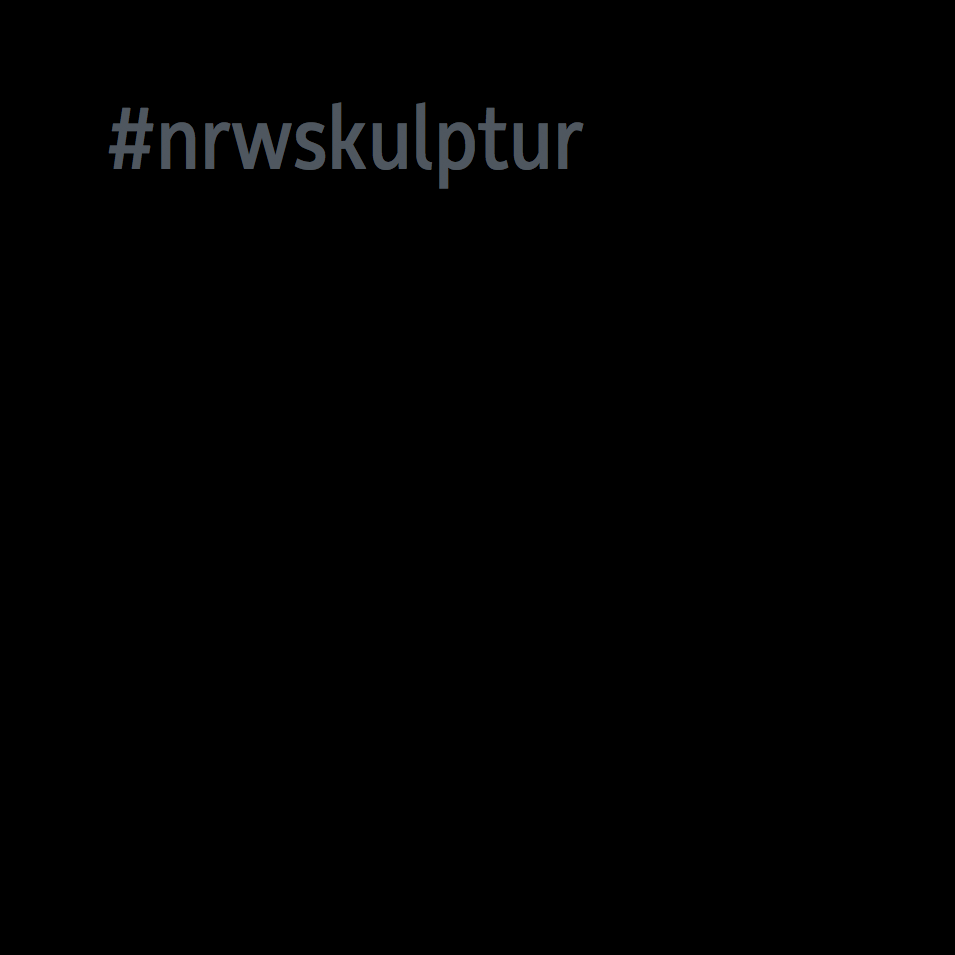Fortuna
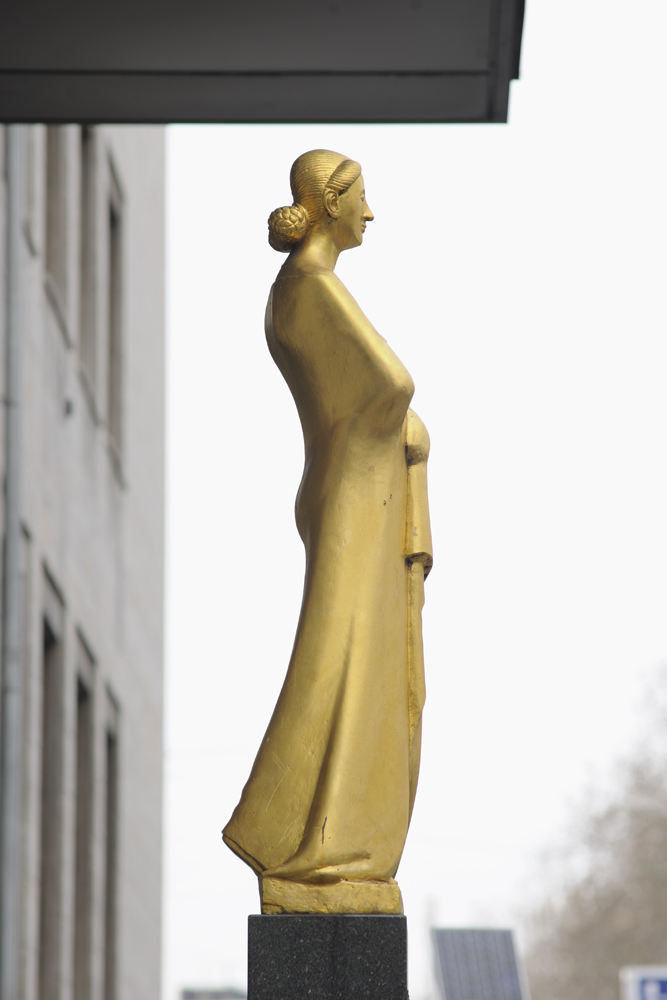
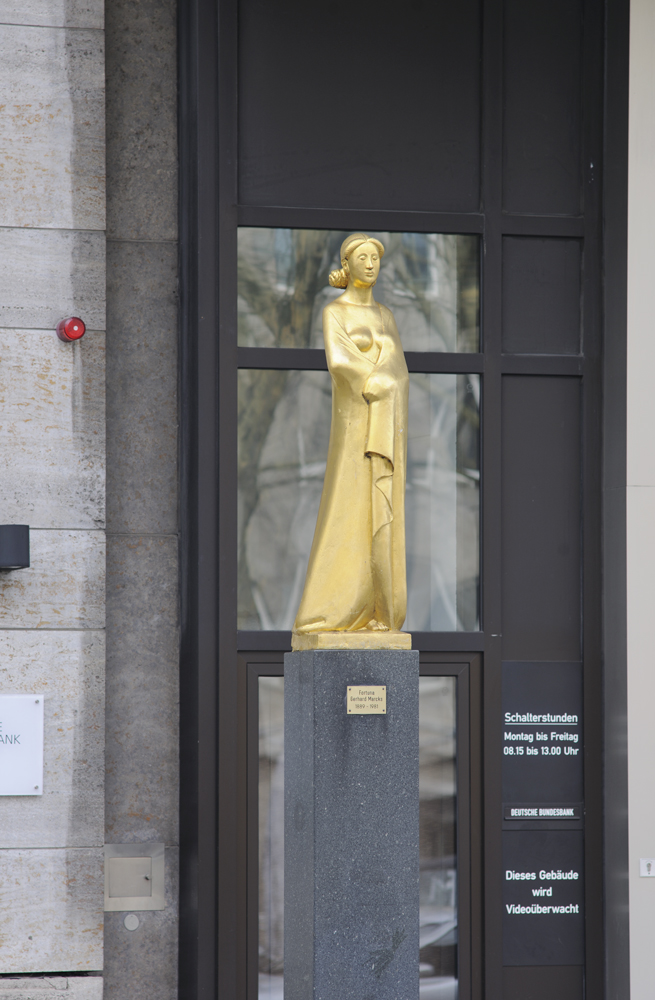
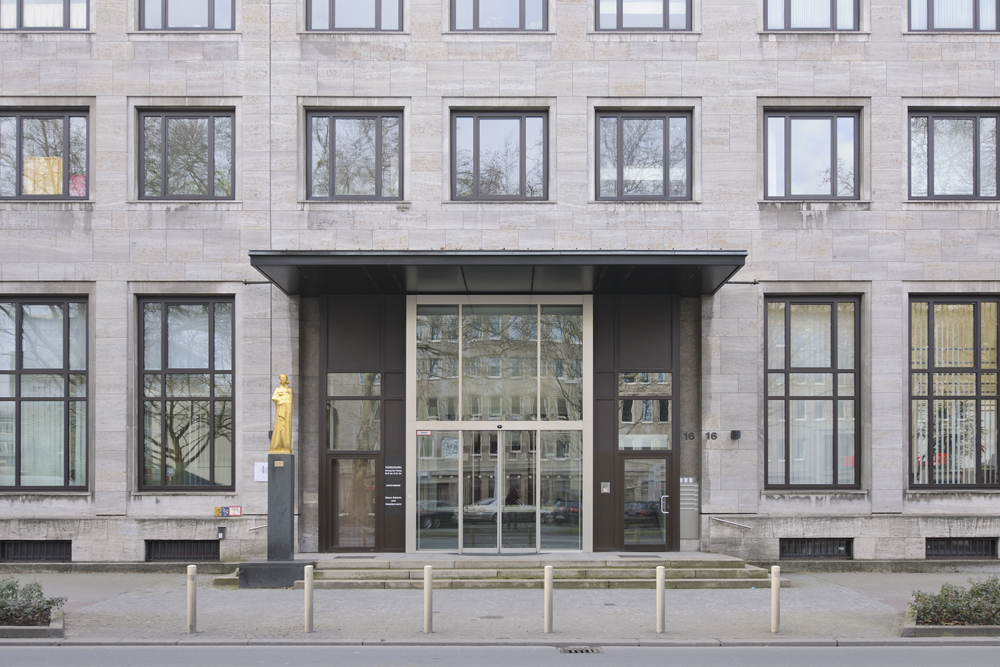

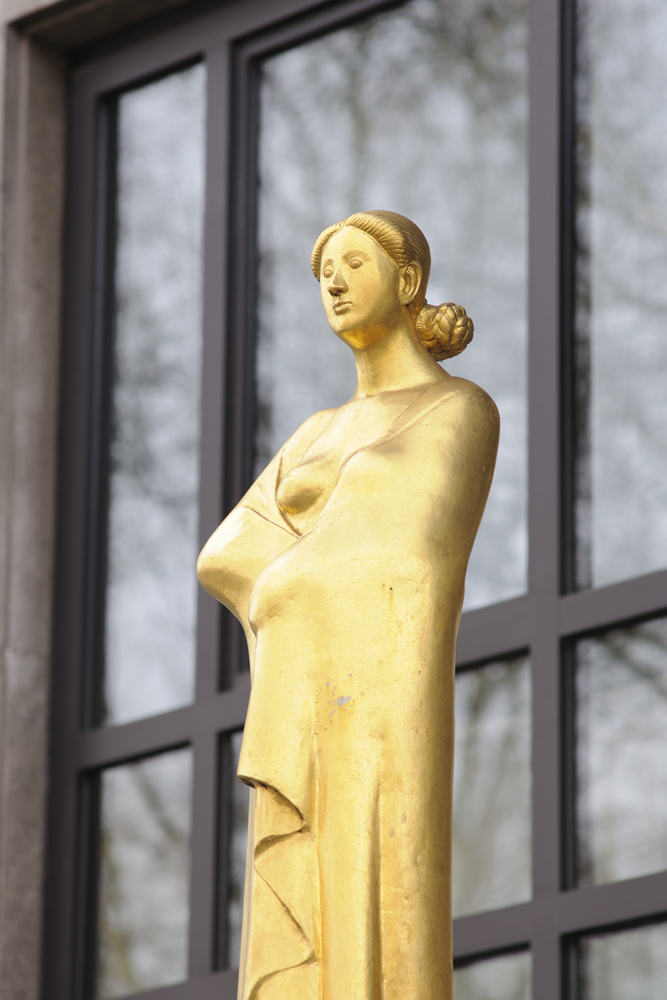

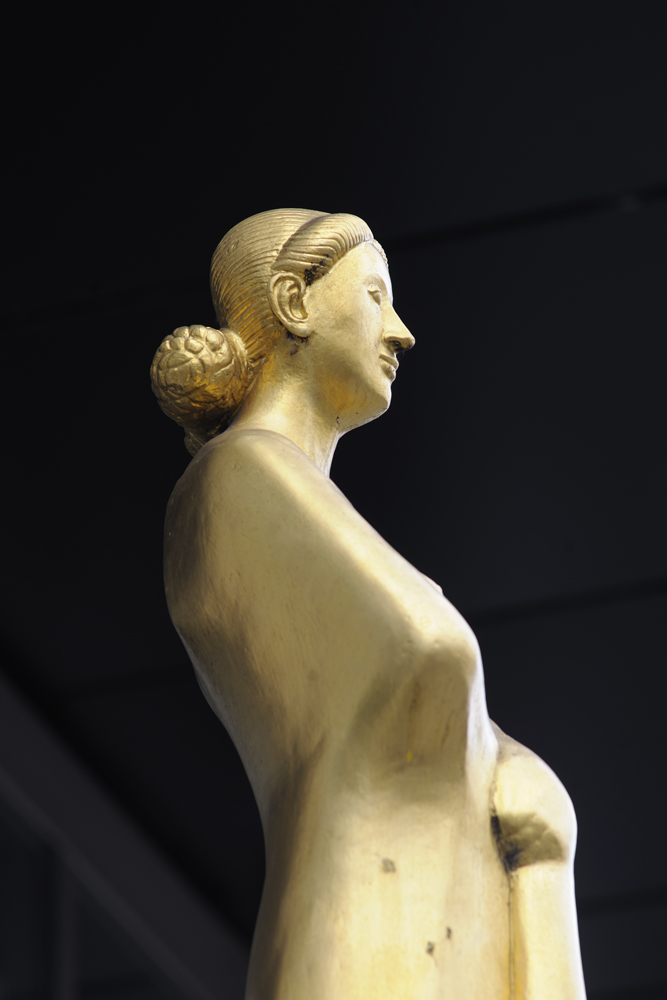
There are four castings of Gerhard Marcks’s bronze Fortuna sculpture, one of which is located in front of the Landeszentralbank in Dortmund. In this very appropriate location, the Roman goddess of fate and fortune stands atop a narrow pedestal. The viewer is forced to look up at the radiant gold figure, while her own gaze wanders off into the distance. It is as if she is bestowing her gifts of fortune and misfortune without even acknowledging at the recipients, almost disinterested in human fates.
Although Fortuna is a figure from classical mythology, Gerhard Marcks’s interpretation of her is timeless. She is wearing a simple cape that is gathered around her and covering her arms. This contributes to a more closed, simplified silhouette, while also reinforcing the detached disposition of the goddess. While she distributes her wealth of gifts with a cornucopia in other depictions, here she remains without any of her typical attributes. What Fortuna holds for us remains hidden from the viewer behind her cape.
Further reading:
Jürgen Zänker: Öffentliche Denkmäler und Kunstobjekte in Dortmund. Eine Bestandsaufnahme, 1984, 2nd edition. 1990, no. 196, p. 174.
New York 1967 (Leonard Hutton Galleries), A Comprehensive Exhibition of Bronze Sculpture by Gerhard Marcks, cat. no. 12 with full-page illustration. p. 10 (another casting).
Pawlowsk/Bremen/Halle a. d. Saale 1993 (Palastanlage Pawlowsk/Gerhard-Marcks-Haus/Staatliche Galerie Moritzburg).
Gerhard Marcks und die Antike, with full-page ill.; Jena 2004 (Stadtmuseum).
Gerhard Marcks. Zwischen Bauhaus und Dornburger Atelier, cat. no. I/30 with full-page ill. p. 77.
Gerhard Marcks
← Zur Startseite
Dortmund-Mitte, Deutsche Bundesbank, Hiltropwall 16
